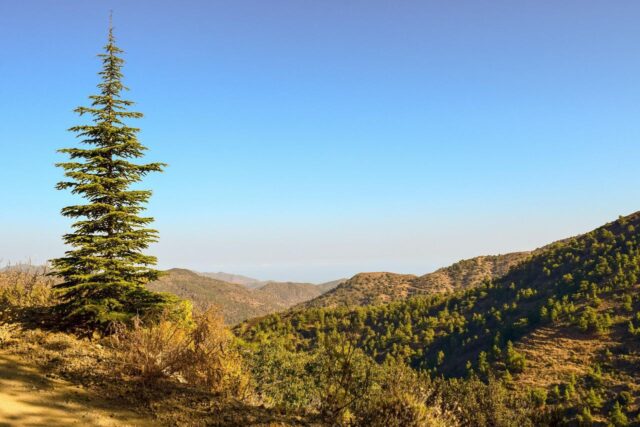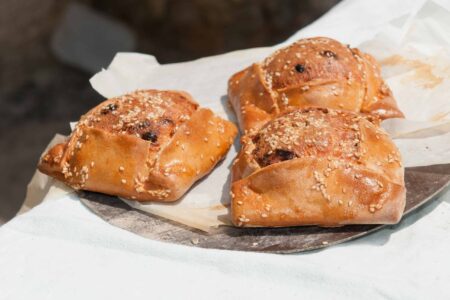Troodos National Forest Park is the largest protected area in Cyprus and one of the island’s most significant sites, preserving a unique Mediterranean ecosystem. This protected region, located in the central mountainous part of the country, encompasses majestic mountains, dense pine forests, waterfalls, monasteries, and picturesque villages. Troodos is a symbol of Cypriot nature, home to the highest peaks, rare plants, and purest mountain air.
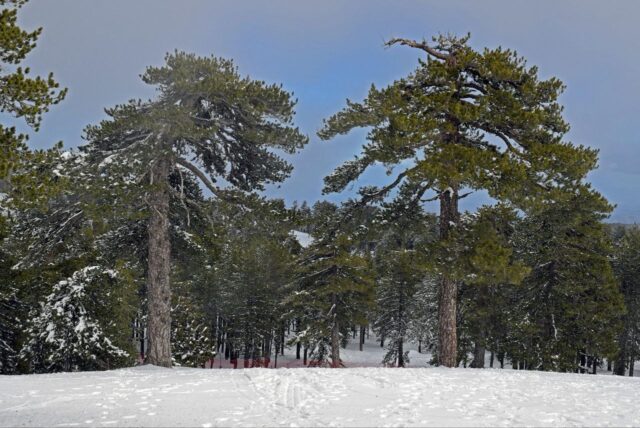
Contents
Natural significance and ecosystem
Troodos National Forest Park is a rare example of a mountain ecosystem in the eastern Mediterranean, where coniferous forests, alpine meadows and subtropical flora coexist.
750 plant species grow here, about 70 of which are endemic, meaning they are found only in Cyprus. Among them are the Cyprus fir (Abies cypria), the golden oak grove, the Troodos rockcress, and the Cyprus phlox. In spring, the slopes are painted in vibrant colors by anemones, irises, and wild violets.
The park’s wildlife is also rich. It is home to mouflons, the wild mountain sheep that are the symbol of Cyprus, as well as foxes, hedgehogs, hares, and rare bird species such as the Cyprus warbler and the Eurasian reed warbler.
Thanks to its clean air and crystal clear water, Troodos is considered the “lungs of Cyprus” – its forests regulate the climate and supply the island with water and oxygen.
Geographical location and features of the territory
The park encompasses the central part of the Troodos mountain range and covers an area of over 9,000 hectares, most of which is protected by law for the preservation of natural ecosystems. Its highest point, Mount Olympus (Chionistra), at 1,952 meters above sea level, is the highest in Cyprus.
The park’s territory extends across several administrative districts—Limassol, Nicosia, and Paphos. Many of the island’s rivers, including the Kouris, Klara, and Diarizos, originate here, feeding reservoirs and fertile valleys.
Due to its altitude, Troodos has a significantly different climate than the coastal areas: in summer it is 8-10 degrees cooler, and in winter it receives snow, making it the only place in Cyprus where you can ski.
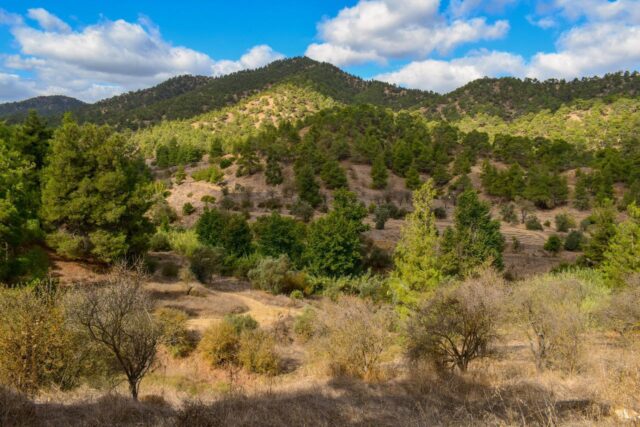
Geology and relief
The Troodos Mountains are one of the most fascinating geological formations in Europe. They represent a unique section of oceanic crust, which was uplifted by tectonic processes over 90 million years ago. This phenomenon is known as the Troodos Opholite Complex and is recognized as a site of international scientific significance.
The park’s terrain is varied, ranging from gentle slopes and mountain valleys to steep gorges and rocky outcrops. Among the most picturesque spots are Caledonia Gorge, Millomery Falls, Hantu Falls, and Sedra Valley.
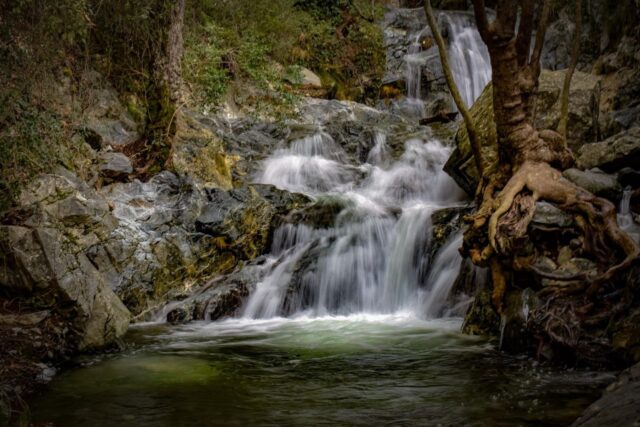
Attractions and routes
10 official hiking trails run through the park, each equipped with signs and observation platforms.
The most popular trails:
- The Artemis Trail is a 7-kilometer loop around Mount Olympus. It offers panoramic views of the entire coastline.
- The Atalanti Trail is a 14-kilometer route through pine forests and ancient mountain roads.
- The Caledonia Trail is a scenic trail along the Caledonia Falls.
- The Persephone Trail is a short (3 km) trail with views of the Maratha Valley.
Along the way, you’ll encounter wooden bridges, springs, stone vaults, and picnic areas. All routes are suitable for independent exploration, and maps with trail markings are available at Troodos tourist centers.
Cultural objects
The national park contains eight Byzantine churches, listed as UNESCO World Heritage Sites. These churches, decorated with frescoes from the 11th to 16th centuries, are of exceptional artistic value. Among them are the Church of Archangel Michael in Pedoulas, Panagia Forviotissa in Nikitari, and the Church of St. Nicholas at the Wall (Agios Nikolaos tis Stegis) in Kakopetria.
Also located in the park is Kykkos Monastery, the largest and richest monastery in Cyprus, founded in the 11th century. It houses an icon of the Virgin Mary, said to have been painted by the Apostle Luke.
Villages and recreation
The Troodos region is home to numerous traditional mountain villages— Platres, Kakopetria, Pedoulas, Omodos, Troodos, and Agros —each preserving its unique character and traditions. Narrow streets, stone houses with tiled roofs, vineyards, and tavernas create an atmosphere of tranquility and comfort.
The Troodos National Park Information Center is located in Platres, where you can learn about the trails, history, and natural features of the region. Guided tours, bike rides, and winter excursions are also offered.
In winter, the Sun Valley ski resort, located on the slopes of Mount Olympus, offers four trails of varying difficulty levels. Skiing runs from January to March, and the panoramic views of snow-covered forests make this a unique destination in the Mediterranean.
Climate and best time to visit
Troodos National Park is beautiful at any time of year. In spring, wild irises and anemones bloom, and in summer, temperatures never exceed 26°C, making the mountains an ideal refuge from the heat. In autumn, the forest turns red and gold, and in winter, the mountain peaks are covered in snow, turning Troodos into a true alpine fairytale.
The best times for hiking are April–June and September–November, when temperatures are comfortable and the air is filled with the scent of pine and cypress trees.
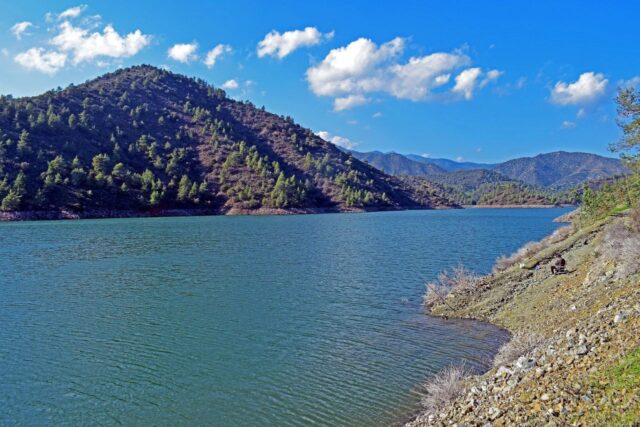
Visiting rules and safety
The park is free to visit and open year-round. However, please follow these rules:
- it is prohibited to light fires outside of designated areas;
- you must not pick rare plants or feed wild animals;
- you must take your trash with you;
- when walking the routes, it is advisable to have water, a hat, and shoes with non-slip soles.
To protect the natural environment, the park is constantly monitored for environmental issues, and some areas are closed to mass tourism.
Why you should visit Troodos
Troodos National Forest Park is the heart of Cyprus, where natural power, tranquility, and history merge. Here you can experience the contrast between the sultry coastal plains and the cool mountains, inhale the scent of pine trees, and hear the rush of mountain rivers.
Troodos offers a rare combination—from walks among centuries-old pine trees to exploring Byzantine monasteries and authentic villages. This is the place to experience Cyprus in all its natural and cultural fullness.
